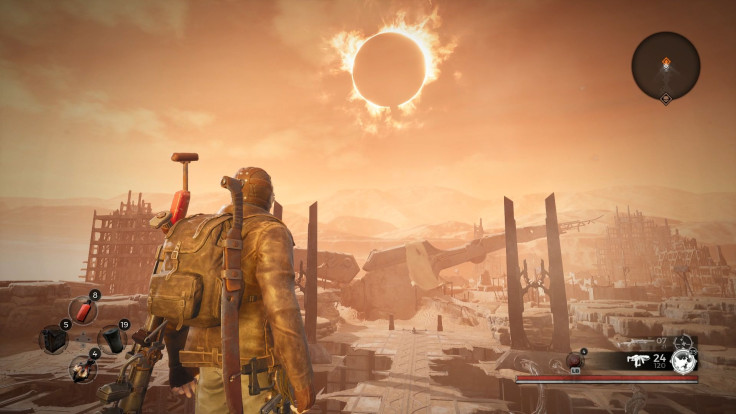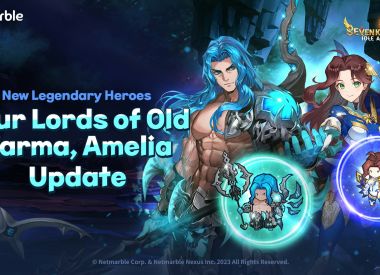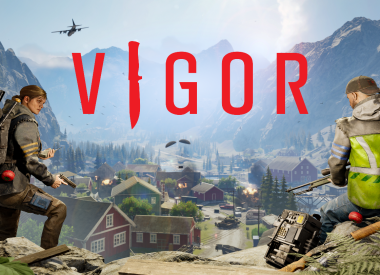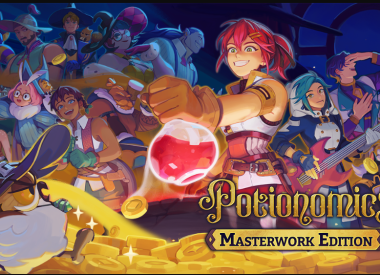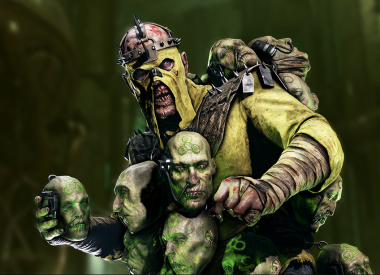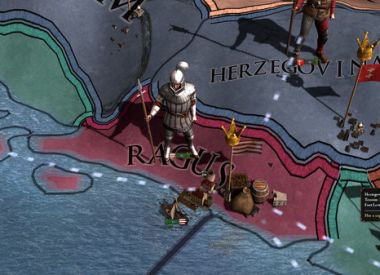In challenging games, there exists a very fine line between actual difficulty and tedium. The best titles always feel like a balancing act between the two, as too much difficulty feels inaccessible, and too little or too much tedium is just outright boring. Deeper within those two clashing aspects are the Souls-likes, a subgenre of the action RPG group of games that are often defined within the boundaries of their namesakes – a series of challenging titles that prove that there still exists a definitive market for difficult games.
Remnant: From the Ashes is as far as you can possibly get from a Souls-like while still being inspired by the genre itself. The third-person action RPG shooter from Gunfire Games is their attempt at a new IP, and despite having all the odds stacked against it due to past entries in the genre, Remnant manages to carve a name upon the metaphorical deadwood of challenging action games. It’s the kind of surprising success you happen upon once in a blue moon, and it does so in a well-documented effort of balancing difficulty and tedium, with a general heaping of amazing gunplay on top.
Story
Remnant takes a more tame approach to the storytelling and worldbuilding than the Souls games, in that the latter features many tales and narratives woven together in the items, audio snippets, and even the backgrounds of the environments.
Remnant: From the Ashes follows the story of your character, a remnant of humanity on the vestiges of extinction. In the late 60s, scientists discovered a mysterious stone that was etched with strange and alien symbols. Deciphering those symbols opened portals to multiple worlds, but the process of this amazing discovery came an incredibly terrible price. An invading force known as the Root gradually made its way to our world, decimating much of the populace.
The events of the game begin 80 years later, where under mysterious circumstances and at the behest of unknown superiors, your character arrives at the shores of a ruined city under the looming presence of a mysterious tower. Ultimately, your goal is two-fold: find and destroy the cause of the Root, and uncover the secrets of the mysterious tower. Along the way, you’ll meet other people and friendly beings from different worlds, all striving to survive the Root’s influence.
I very much appreciate the lore and world-building associated with Remnant, as it heavily reminded me of those cheap cartoons and shows where the Hero travels across space and time to save various worlds. Of course, Remnant is packaged a bit differently, with more horror and mature themes, but the framework of that sole hero hot on the trail of a greater evil is a timeless classic of storytelling.
Remnant provides a progression system that relies on the actions and dialog choices that you pick. It’s surprisingly in-depth as well, as I’ve found out the hard way. A lot of simpler choices that I thought would be the good choice ended up more complicated than imagined, and some NPCs react very differently to the things you say, opening up new avenues of choices to explore.
Gameplay
The bulk of what makes Remnant an underrated masterpiece is gameplay, specifically the way it handles your primary source of attacks: guns. At its core, Remnant is a third-person shooter, and you’ll find that it’s exemplary when it comes to the ‘shooting’ part. Guns feel amazing to handle, and there are several ways to tweak controls in order to get the most out of shooting them, at least on PC.Accuracy and bullet drop are pretty decent, as well as the built-in target magnetism. When you draw your weapon, you’ll find that it immediately sticks to enemies, but it doesn’t outright aim for you. Moving targets still need to be focused on, but you’re not wasting time pulling up on a proper target after bringing up the crosshairs. In terms of arsenal, there’s also quite the variety of weapons available to you, as Remnant’s bread and butter is found in looting or crafting new gear throughout the game.
There are three weapon slots: one for a sidearm (usually a pistol or a semi-automatic), a long gun (shotguns, sniper rifles, etc.) and a melee weapon. The ranged weapons can be improved further by upgrading, or be modded with special attachments to give you unique power-ups in combat. Mods make and break the game, and in order to fully appreciate the combat you have to use them whenever they’re available.
What led so many people to compare Remnant to a Souls-like is the dodging mechanic, which allows your character to jump out of the way from many projectiles and attacks. Don’t be mistaken though, as dodging in Remnant works very differently from dodging in other Souls-likes. First off, there’s very few invincibility frames involved – dodging here is what you might expect from dodging in real life. Dodging towards the attack of a specific boss in Souls works since there are i-frames, which makes your character invulnerable for the duration. In Remnant, you want to always dodge out of the way from attacks, as it’s meant to actually move you away from an attack rather than protect you from it.
Segueing into the melee combat and I found it to be a bit underwhelming, in contrast to the great gunplay and dodging mechanics. For the most part, I guess that’s to be expected from a game that markets itself as a third-person shooter, but there’s a decent leeway between underplaying a mechanic and turning it into an afterthought, and melee in Remnant definitely feels like the latter. It’s most often used against enemies when they get too close for comfort, as it doesn’t consume stamina and is a great deterrent for getting swarmed. You can also rely on it on a pinch to save your ass when you run out of ammo, which is pretty rare, but has happened on higher difficulties.
Ammunition in Remnant is well-implemented, and ties very neatly into the checkpoint system. Throughout the world you’ll find glowing red crystals to rest in, which are the ‘bonfires’ of Remnant; using them fills your health, removes any negative status effects, restores all the charges of your Dragon Heart (Estus flask) and refills all of your ammo. These crystals can also be used for fast travel, unless it’s located in a particular dungeon. These checkpoints offer a nice respite in between missions, and I’d say that they’re placed pretty strategically, coming at just the right frequency.
During downtimes, you can also proceed to level your character’s traits using a unique system. At the start of the game, you only have access to a few of these traits, like getting more health or stamina. Over the course of playing you’ll end up getting more traits, ranging from decreased ranged damage taken, less stamina used, elemental resistance, increased reload speed and many more.
At the beginning of the game you can choose between three Archetypes, the differences between them being the guns and armor they start with. These Archetypes, however, do not dictate how you will end up playing the game, owing to the fact that there’s no actual stats like Strength, Dexterity and the like. They’re only meant to serve as a starting point for your character, and from there anything absolutely goes.
Another key element to Remnant and its gameplay is the bosses, of which there are about 20+ in the game. There’s quite the variety to them, although I can’t help but feel that at some point there’s only a few of them that really received attention worthy of a boss fight, while the others were given the generic treatment. Remnant didn’t really click for me until I faced off with Singe, a fire-breathing dragon made of deadwood.
For the most part, dungeons are where Remnant’s gameplay can turn sour. They are by and large the biggest part of the game, as they’re the transition points between different areas. The problem with them is that more often than not they’re a chore to deal with – tons of enemies from various directions, tight spaces, and filled with artificial difficulty that I’d have been fine skipping. The worst bit is that dungeons are made from the same content, just rearranged differently.
Remnant ’s game design works on “dynamic generation,” which means means that what you see in the game is hand-crafted, but to make it replayable, this content has been randomly stitched together to give the illusion of variety. This dynamic generation is key to Remnant, as you can ‘reroll’ a world anytime you like; doing so will rearrange dungeons and world generation, as well as giving you the ability to pick a higher difficulty. However, as much as this system encourages multiple playthroughs through different outcomes, it also exposes the repetitiveness of dungeons. I loved traversing through the game’s many open environments, but wandering through the same dungeons just with different routes felt tiring after the fifth or sixth time.
Multiplayer experience, multiple difficulties
Remnant is billed first and foremost as a co-op experience, one that you should play with friends in order to be fully realized. I’d say that that’s half-true, and that you can actually enjoy the game just by playing solo.
When it comes to cooperative gameplay, though, Remnant becomes a slightly different beast. Difficulty is scaled throughout most of the game, although I’d hardly call more enemies spawning as higher difficulty. Whereas you’re playing a deadly, conservative and reactive player in single-player, multiplayer turns you and your partners into a small army that’s focused on killing as much as humanly possible.
Remnant’s optimization for multiplayer loot sharing is also pretty commendable. All of the acquired loot and equipment duplicates for all players to get, no matter who picks it up first. However, only the host’s world advances, which means that if you want to play this game in single-player you have to play in your own world.
The server performance is pretty good, and I didn’t really find any issues after about ten hours playing with my brother. There is friendly fire, though, which is why I highly advise against playing in public lobbies where playing could turn into a griefing fest; that said, I did play for a bit with other people, jumping from lobby to lobby, and I didn’t have many problems.
Art, level, character and enemy design
Remnant ’s art design really reminds me of Darksiders III, and the character models look like they’re lifted straight from that game. For the most part, the game’s many worlds are also very vibrant and varied, despite the repetitive dungeons. Rhom in particular was a highlight for me; hanging over the desert wastelands is a perpetual black sun, and it looks epic on the horizon of the ruins of a once great city.
Level design could’ve been better, what with the copy-pasted dungeon sections and the tedium that comes from it. The overworlds themselves are pretty good though, and there’s a big chance you can get lost wandering them as they are expansive. There’s a map in the menu for these situations, as well as a mini-map at the upper right corner of your HUD.
Enemy designs are also pretty cool, with a lot of inspiration behind them. In direct contrast with the dungeons, there’s actually a good variety of enemies available to fight in Remnant. They feature enough different attacks and animations designed to make them stand out from each other. There’s also a bit of complexity to the AI, which is really nice – even if most of the enemies just end up being fodder for your guns. The stronger enemies will, from time to time, make a concerted effort to dodge and avoid your attacks, making encounters really exciting and worthwhile.
Sound design and music
There’s a bit of complexity involved in Remnant’s musical cues, which is another great surprise for this game. For instance, when a miniboss spawns, it plays a short cue, which signals that you should get ready; upon killing said enemy, the cue plays again to signal that it’s over. It’s not the biggest thing to talk about, but that mechanic came in really useful when I was getting swarmed by multiple enemies, and I imagine it can do a lot for multiplayer situations as well.
The voice acting is serviceable but incredibly generic, which is a bit of a downside. The only VA work I remembered was that of the Undying King and Mud Tooth. The rest all just play out like regular voice acting, and feel like an afterthought to everything else. It’s a bit disappointing, as good voice work could’ve lent more credence to the game’s lore and world-building – without it some players will just end up getting bored by the endless talk coming from these characters.
In terms of music, it’s also middling to forgettable. In some boss battles the music is pretty good, sprawling to accompany your battle against a legendary foe, but in between those there’s nothing to be really impressed about. Ward 13, the game’s central hub, has a theme, but it’s not that special to begin with and sometimes annoying over the voices of the characters you interact with.
Technical talk
Remnant, like Gunfire’s Darksiders III, is incredibly well-optimized. It’s probably one of the best-optimized titles I’ve played this year, and it runs perfectly well on my PC at the highest settings with 1080p resolution and 144 fps. There are no stutters of any sort, even while I was recording footage, and loading screens never lasted more than four or five seconds even when I had it installed on an almost-filled SSD.
Controls are great, too, and incredibly intuitive with no real difficulties to speak of. Even if there were, you can remap most of them in the settings, which should give other players more ways to enjoy Remnant. I played it with both a keyboard and mouse combo as well as a controller, and found that they’re equally great for playing Remnant, so players who prefer one over the other aren’t missing out.
Overall
Remnant is the kind of game that people will be playing for a long time, despite the somewhat repetitive dungeon design and artificial spikes for the higher difficulty options. If Gunfire can deliver on its post-launch content accordingly and work on some of its more tedious aspects, Remnant will be a fully-realized success that should be on the list of everyone who considers themselves a fan of the action RPG genre. As it stands though, Remnant is still an accomplishment that defied every convention of what usually happens when third-person shooters and Souls-likes are mixed, all thanks to a powerful formula of an intriguing overarching narrative mixed with great solo experiences and unforgettable cooperative ones.
- Great gunplay, with weight behind the shooting and a ton of variety for its weapons.
- Solid dodging, strafing and other side mechanics.
- Dynamic Progression works well, to an extent.
- Good boss and enemy designs.
- Intriguing story and narrative.
- Repetitive at times due to the nature of the rearranged dungeon system.
- Melee combat not as impactful.
- Boring voice acting and overall sound design.
- Artificial scaling difficulty.

